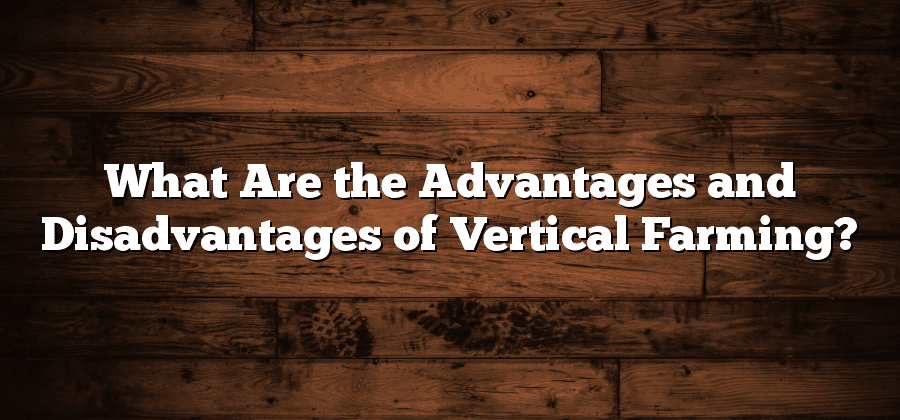2) Efficient Space Utilization
Efficient space utilization is one of the key advantages offered by vertical farming. This innovative method allows for the cultivation of crops in vertically stacked layers, making the most of limited space. Unlike traditional farming methods that require vast expanses of land, vertical farming maximizes the use of vertical space, making it possible to grow more crops in smaller areas.
By utilizing vertical structures, such as tall buildings or dedicated vertical farming facilities, the available space can be optimized for crop production. This vertical arrangement allows for the stacking of multiple layers of plants, with each layer receiving adequate access to sunlight and nutrients. As a result, vertical farming is highly efficient, enabling increased crop yields per square meter of land. This aspect of efficient space utilization is crucial, particularly in urban areas where land availability is limited, and there is a growing need to provide local, fresh produce to a growing population.
3) Reduction in Water Usage
One of the major advantages of vertical farming is the significant reduction in water usage. Traditional farming methods often require large amounts of water to irrigate crops, leading to water scarcity in many regions. In contrast, vertical farming utilizes advanced irrigation systems that precisely deliver water directly to the plant roots, minimizing water waste. This efficient use of water not only conserves this precious resource but also reduces the strain on local water supplies.
In vertical farming, water is usually recycled within the system, further enhancing its water efficiency. The closed-loop system collects excess water from the plants and filters it to remove any impurities or contaminants. This filtered water is then reused to irrigate the crops, eliminating the need for excessive water withdrawals from natural sources. By implementing such sustainable water practices, vertical farming plays a crucial role in relieving pressure on water sources and promoting water conservation on a larger scale.
4) Year-round Crop Production
Year-round Crop Production
Vertical farming offers a game-changing solution for year-round crop production. With traditional farming methods, crop cultivation heavily depends on seasonal changes and weather conditions. However, vertical farming eliminates these limitations by creating controlled environments that can mimic ideal growing conditions throughout the year. This means that regardless of the external factors, such as temperature, sunlight, and precipitation, crops can thrive consistently and be harvested in any season.
By implementing advanced technologies like artificial lighting, hydroponics, and vertical stacking, vertical farms are able to provide plants with the necessary light, water, and nutrients they need to grow and produce bountiful yields. Additionally, the vertical farming system allows for precise control over factors such as temperature, humidity, and CO2 levels, creating optimal conditions for plant growth. This not only empowers farmers to bring fresh produce to the market continuously but also reduces their dependence on seasonal shifts and enables them to meet the growing demand for food year-round.
5) Minimization of Pesticide Use
The minimization of pesticide use is one of the key advantages of vertical farming. With traditional farming methods, pesticides are often used to protect crops from pests and diseases. However, these chemicals can have harmful effects on the environment and human health. In vertical farming, the controlled indoor environment reduces the need for pesticides as the chances of pest infestations are significantly lower. This is due to the absence of open fields and exposure to outdoor pests. With careful monitoring and innovative techniques such as integrated pest management, vertical farms can effectively minimize the usage of pesticides while still ensuring healthy and thriving crops.
In addition to reducing the reliance on pesticides, vertical farming also offers the advantage of utilizing organic and natural pest control methods. By implementing techniques such as biological pest control, which involves using beneficial insects to control pests, vertical farms can maintain a balance within the ecosystem that naturally keeps harmful pests in check. This approach not only minimizes the use of chemicals but also promotes a more sustainable and eco-friendly farming system. With the focus on sustainable practices, vertical farming provides a compelling solution for reducing pesticide use and ensuring the production of safe, high-quality crops.
Disadvantages of Vertical Farming:
Despite the numerous advantages that vertical farming offers, there are also several disadvantages that need to be considered. One major drawback is the high initial investment required to set up a vertical farm. The construction of a vertical farming facility involves advanced technology, specialized equipment, and sophisticated systems for lighting, irrigation, and climate control. These expenses can be prohibitive for many potential farmers, especially small-scale or traditional farmers looking to transition to vertical farming.
Another disadvantage of vertical farming is the significant energy consumption associated with indoor farming practices. Vertical farms require artificial lighting and climate control systems to simulate natural conditions for plant growth. This requires substantial amounts of energy, which can have a negative environmental impact and drive up operational costs. Moreover, the reliance on artificial lighting can limit the types of crops that can be grown efficiently, as some plants may require a specific amount and quality of natural sunlight to thrive.






